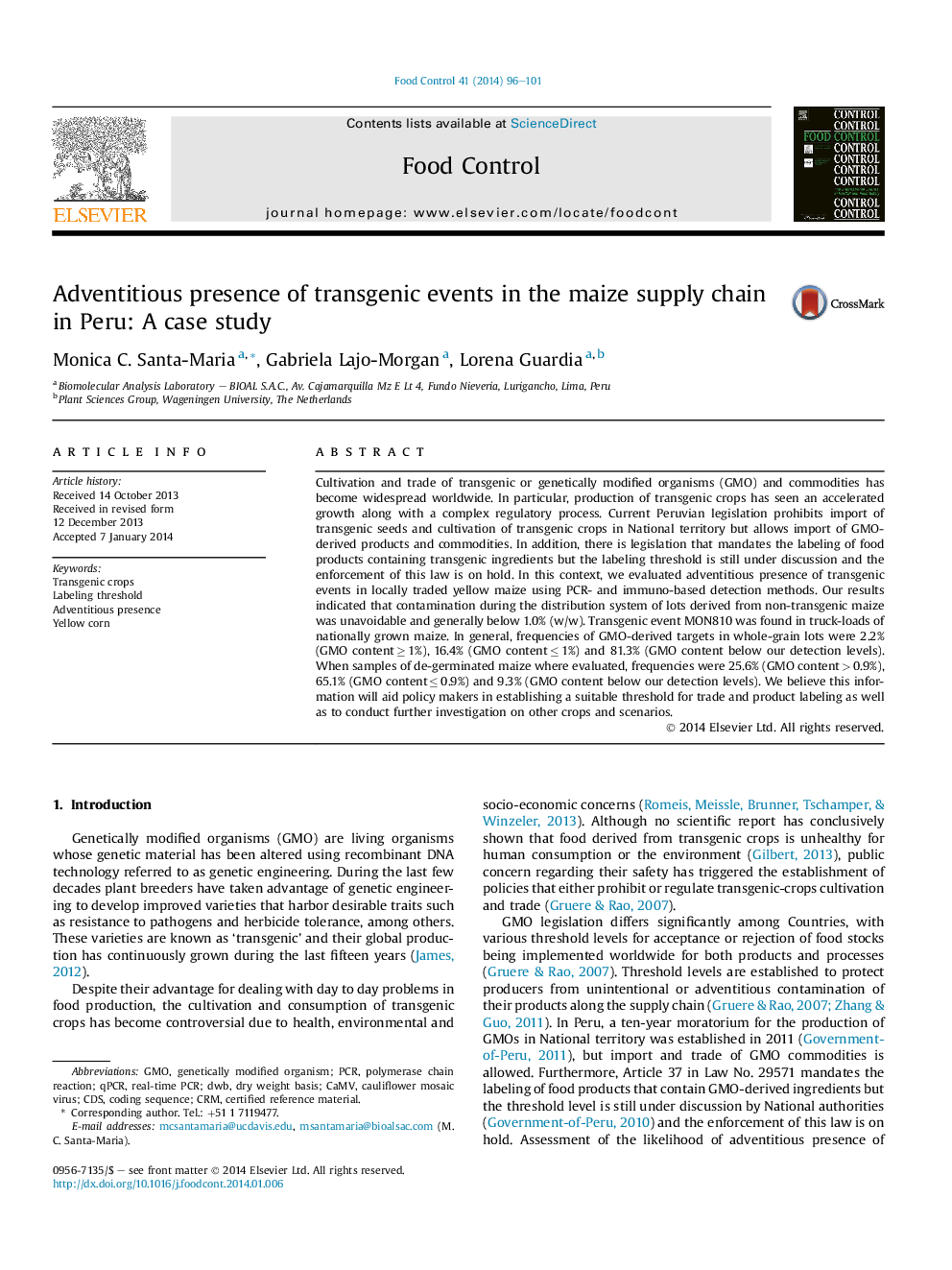| کد مقاله | کد نشریه | سال انتشار | مقاله انگلیسی | نسخه تمام متن |
|---|---|---|---|---|
| 6391924 | 1628421 | 2014 | 6 صفحه PDF | دانلود رایگان |
- GMO presence is widespread in the supply chain of nationally grown maize in Peru.
- CaMV 35SP, T-NOS and event MON810 were found in truck-loads of nationally grown maize.
- 2% of Whole-grain lots had GMO content â¥Â 1%, 17% â¤Â 1% and 81% below detection levels.
- Events MON810 and NK603 found in truck-loads of nationally grown de-germinated maize.
- 25% De-germinated lots had GMO content > 0.9%, 66% â¤Â 1% and 9% below detection levels.
Cultivation and trade of transgenic or genetically modified organisms (GMO) and commodities has become widespread worldwide. In particular, production of transgenic crops has seen an accelerated growth along with a complex regulatory process. Current Peruvian legislation prohibits import of transgenic seeds and cultivation of transgenic crops in National territory but allows import of GMO-derived products and commodities. In addition, there is legislation that mandates the labeling of food products containing transgenic ingredients but the labeling threshold is still under discussion and the enforcement of this law is on hold. In this context, we evaluated adventitious presence of transgenic events in locally traded yellow maize using PCR- and immuno-based detection methods. Our results indicated that contamination during the distribution system of lots derived from non-transgenic maize was unavoidable and generally below 1.0% (w/w). Transgenic event MON810 was found in truck-loads of nationally grown maize. In general, frequencies of GMO-derived targets in whole-grain lots were 2.2% (GMO content â¥Â 1%), 16.4% (GMO content â¤Â 1%) and 81.3% (GMO content below our detection levels). When samples of de-germinated maize where evaluated, frequencies were 25.6% (GMO content > 0.9%), 65.1% (GMO content â¤Â 0.9%) and 9.3% (GMO content below our detection levels). We believe this information will aid policy makers in establishing a suitable threshold for trade and product labeling as well as to conduct further investigation on other crops and scenarios.
Journal: Food Control - Volume 41, July 2014, Pages 96-101
